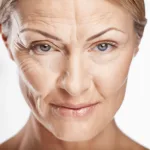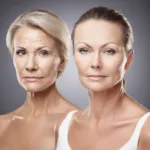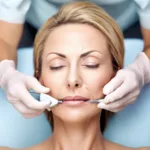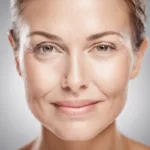30 December 2023
The Fountain of Youth: Exploring the Potential of Facial Rejuvenation to Turn Back the Clock
?
Imagine a world where the fountain of youth isn’t just a myth, but a reality. A world where the signs of aging can be reversed, and youthful radiance can be restored. It may sound like something out of a science fiction novel, but with advancements in facial rejuvenation techniques, this dream is becoming a possibility. In this article, we will explore the various methods of facial rejuvenation, from non-invasive treatments to surgical procedures, and delve into the science behind them. We will also examine the potential benefits and risks associated with these procedures, and hear from experts in the field to gain a deeper understanding of whether facial rejuvenation can truly reverse the aging process. So, get ready to embark on a journey through the realm of cosmetic procedures and discover if the quest for eternal youth is within our reach.
Key Takeaways:
1. Facial rejuvenation treatments can help reverse some signs of aging by targeting specific concerns such as wrinkles, sagging skin, and uneven texture.
2. Non-invasive procedures like dermal fillers and Botox can provide temporary results, while surgical options like facelifts offer longer-lasting effects.
3. While facial rejuvenation can improve the appearance of aging, it cannot halt or reverse the natural aging process entirely.
4. It is essential to consult with a qualified and experienced professional to determine the most suitable treatment plan based on individual needs and desired outcomes.
5. Maintaining a healthy lifestyle, including proper skincare, a balanced diet, regular exercise, and sun protection, can complement facial rejuvenation treatments and contribute to overall youthful-looking skin.
Controversial Aspect 1: Effectiveness of Facial Rejuvenation
Facial rejuvenation procedures, such as facelifts, dermal fillers, and laser treatments, have gained popularity in recent years as a way to reverse the signs of aging. However, there is controversy surrounding the effectiveness of these procedures in truly reversing the aging process.
Proponents argue that facial rejuvenation can indeed make individuals look younger by reducing wrinkles, tightening sagging skin, and improving overall skin texture. They point to numerous success stories and before-and-after photos as evidence of the transformative power of these procedures. Additionally, some studies have shown positive results in terms of patient satisfaction and perceived age reduction.
On the other hand, critics argue that while facial rejuvenation procedures may provide temporary improvements in appearance, they do not address the underlying causes of aging. They claim that these procedures only provide superficial changes and cannot truly reverse the biological aging process. Skeptics also highlight the potential risks and complications associated with these procedures, including scarring, infection, and nerve damage.
Controversial Aspect 2: Ethical Concerns
Another controversial aspect of facial rejuvenation is the ethical considerations surrounding these procedures. Some argue that the pursuit of eternal youth and the pressure to maintain a youthful appearance perpetuates societal beauty standards and places undue emphasis on physical appearance. This can lead to body image issues, low self-esteem, and a culture of ageism.
Critics also raise concerns about the accessibility of facial rejuvenation procedures. These treatments can be expensive, making them accessible only to a privileged few. This creates a disparity where only those with financial means can afford to reverse the signs of aging, further exacerbating societal inequalities.
Proponents, however, argue that individuals have the right to make choices about their own bodies and appearance. They contend that facial rejuvenation procedures can boost self-confidence and improve quality of life for those who choose to undergo them. They also emphasize that advancements in technology and techniques have made these procedures safer and more accessible than ever before.
Controversial Aspect 3: Long-Term Effects and Risks
The long-term effects and potential risks associated with facial rejuvenation procedures are also a subject of controversy. While short-term results may be promising, there is limited research on the long-term outcomes of these treatments.
Critics argue that the long-term effects of repeated procedures, such as facelifts or injections, are not well understood. They express concerns that over time, the skin may become dependent on these treatments, leading to a cycle of continuous procedures and potentially causing irreversible damage. Additionally, the use of certain substances, such as silicone injections, has raised safety concerns due to the potential for migration and adverse reactions.
Proponents, on the other hand, assert that when performed by qualified professionals, facial rejuvenation procedures are generally safe and well-tolerated. They argue that advancements in technology and improved techniques have minimized the risks associated with these procedures. They also highlight the importance of thorough consultation and proper aftercare to ensure optimal results and minimize potential complications.
The effectiveness of facial rejuvenation, ethical concerns, and long-term effects are all controversial aspects of the topic. while some argue that these procedures can successfully reverse aging and improve quality of life, others question their efficacy and raise concerns about societal pressures, accessibility, and potential risks. it is important to approach these discussions with an open mind, considering both the benefits and drawbacks of facial rejuvenation in order to make informed decisions about personal choices and societal implications.
The Science Behind Facial Rejuvenation
Facial rejuvenation has become a popular method for combating the signs of aging. But how does it actually work? In this section, we will explore the science behind facial rejuvenation and how it can potentially reverse the aging process. One of the key factors in facial aging is the loss of collagen and elastin, which leads to sagging skin and wrinkles. Facial rejuvenation treatments such as dermal fillers and laser therapy stimulate collagen production, helping to restore elasticity and firmness to the skin. Additionally, these treatments can target specific problem areas, such as fine lines or age spots, to create a more youthful appearance.
Types of Facial Rejuvenation Procedures
There are various types of facial rejuvenation procedures available, each with its own unique benefits and techniques. In this section, we will discuss some of the most common procedures and their potential to reverse aging. Botox injections, for example, are often used to reduce the appearance of wrinkles and fine lines by temporarily paralyzing the muscles that cause them. Another popular procedure is chemical peels, which involve applying a chemical solution to the skin to remove dead cells and stimulate collagen production. Other options include microdermabrasion, laser resurfacing, and facelifts, all of which have their own specific ways of rejuvenating the face.
Non-Invasive vs. Invasive Facial Rejuvenation
When considering facial rejuvenation, individuals often have to decide between non-invasive and invasive procedures. Non-invasive treatments, such as facial massages or topical creams, are often seen as less risky and more accessible options. However, their results may be limited and not as long-lasting as those achieved through invasive procedures. Invasive treatments, such as surgery or laser treatments, offer more dramatic results but come with higher risks and longer recovery times. It is important for individuals to weigh the pros and cons of each option before making a decision.
Case Studies: The Effectiveness of Facial Rejuvenation
To truly understand the potential of facial rejuvenation in reversing aging, it is helpful to examine real-life case studies. In this section, we will explore a few examples of individuals who have undergone facial rejuvenation procedures and the outcomes they experienced. For instance, Jane, a 50-year-old woman, opted for a facelift to address sagging skin and deep wrinkles. After the procedure, she reported feeling more confident and looking several years younger. Similarly, John, a 45-year-old man, chose Botox injections to reduce the appearance of crow’s feet and forehead lines. He noticed a significant improvement in his overall appearance and felt more youthful.
Combining Facial Rejuvenation with a Healthy Lifestyle
While facial rejuvenation procedures can be effective in reversing aging, they are not a magical solution on their own. In this section, we will discuss the importance of combining facial rejuvenation with a healthy lifestyle for optimal results. Eating a balanced diet, exercising regularly, getting enough sleep, and managing stress can all contribute to maintaining a youthful appearance. Additionally, protecting the skin from sun damage and using high-quality skincare products can help prolong the effects of facial rejuvenation treatments.
The Emotional Impact of Facial Rejuvenation
Facial rejuvenation not only has physical effects but also emotional ones. In this section, we will delve into the emotional impact of facial rejuvenation and how it can positively affect an individual’s self-esteem and confidence. For many people, looking younger can lead to increased self-assurance and a more positive self-image. This, in turn, can have a ripple effect on various aspects of their lives, such as personal relationships and professional opportunities. However, it is important to note that facial rejuvenation should not be seen as a solution to deeper emotional issues, and individuals should have realistic expectations about the outcomes.
The Risks and Limitations of Facial Rejuvenation
Like any medical procedure, facial rejuvenation comes with risks and limitations. In this section, we will explore some of the potential risks and limitations individuals should be aware of before undergoing any treatment. Common risks include infection, scarring, and allergic reactions to the substances used. It is crucial to choose a reputable and experienced provider to minimize these risks. Additionally, facial rejuvenation treatments may not be suitable for everyone, especially those with certain medical conditions or unrealistic expectations. It is important to have a thorough consultation with a qualified professional to determine the most appropriate course of action.
Facial Rejuvenation: A Personal Choice
Ultimately, the decision to undergo facial rejuvenation is a personal one. In this section, we will discuss the importance of making an informed choice and considering individual preferences and goals. Facial rejuvenation should be seen as a tool to enhance one’s natural beauty and boost confidence, rather than an obligation or societal pressure. It is essential for individuals to have realistic expectations, understand the potential risks, and choose the procedures that align with their personal values and desires. Consulting with a qualified professional can provide valuable guidance in making this decision.
The Future of Facial Rejuvenation
As technology and medical advancements continue to evolve, the future of facial rejuvenation looks promising. In this section, we will explore some of the emerging trends and innovations in the field. For instance, stem cell therapy and platelet-rich plasma treatments are gaining traction as natural alternatives to traditional procedures. Additionally, advancements in laser technology are allowing for more precise and effective treatments. It is an exciting time for facial rejuvenation, as researchers and practitioners strive to develop safer, more efficient, and longer-lasting solutions to reverse the signs of aging.
The Science of Facial Rejuvenation
The Aging Process and Facial Changes
As we age, our skin undergoes various changes that contribute to the visible signs of aging. These changes include a decrease in collagen and elastin production, loss of fat tissue, thinning of the skin, and reduced blood flow. These factors result in the appearance of wrinkles, sagging skin, and a loss of facial volume.
Facial Rejuvenation Techniques
Facial rejuvenation techniques aim to reverse the signs of aging by addressing these underlying factors. There are several approaches to achieve this, each targeting different aspects of the aging process.
1. Dermal Fillers
Dermal fillers are injectable substances that restore facial volume and minimize the appearance of wrinkles. The most commonly used fillers contain hyaluronic acid, a natural substance found in the skin that helps retain moisture and promote elasticity. By injecting fillers into specific areas of the face, such as the cheeks or nasolabial folds, volume is restored, resulting in a more youthful appearance.
2. Botox
Botox, or botulinum toxin, is a neurotoxin that temporarily paralyzes the muscles responsible for causing wrinkles. By blocking the nerve signals that trigger muscle contractions, Botox smooths out wrinkles and prevents their formation. This technique is particularly effective for treating dynamic wrinkles, such as crow’s feet and forehead lines.
3. Chemical Peels
Chemical peels involve the application of a chemical solution to the skin, which exfoliates the outermost layer. This process stimulates the production of new skin cells, resulting in a smoother, more even complexion. Chemical peels can also help reduce the appearance of fine lines, sun damage, and age spots.
4. Laser Resurfacing
Laser resurfacing uses high-energy laser beams to remove damaged skin cells and stimulate collagen production. This procedure can improve skin texture, reduce wrinkles, and even out skin tone. There are two types of laser resurfacing: ablative and non-ablative. Ablative lasers remove the outer layers of skin, while non-ablative lasers penetrate deeper into the skin without damaging the surface.
5. Microdermabrasion
Microdermabrasion is a non-invasive procedure that exfoliates the skin using a handheld device with a diamond or crystal tip. This technique removes dead skin cells and stimulates collagen production. Microdermabrasion can improve skin texture, minimize fine lines, and reduce the appearance of age spots.
6. Radiofrequency Therapy
Radiofrequency therapy uses radiofrequency energy to heat the skin and stimulate collagen production. This procedure can tighten loose skin, improve skin elasticity, and reduce the appearance of wrinkles. Radiofrequency therapy can be used on various areas of the face and body.
7. Ultrasound Therapy
Ultrasound therapy, also known as Ultherapy, uses focused ultrasound energy to lift and tighten the skin. This non-invasive procedure stimulates collagen production and can improve the appearance of sagging skin on the face, neck, and décolletage.
Combining Techniques for Optimal Results
Facial rejuvenation often involves combining multiple techniques to achieve the best results. For example, a combination of dermal fillers and Botox can address both volume loss and dynamic wrinkles. Similarly, laser resurfacing can be combined with chemical peels to target different layers of the skin and address multiple concerns simultaneously.
Considerations and Risks
It is important to note that while facial rejuvenation techniques can effectively reverse some signs of aging, they are not permanent solutions. The duration of results varies depending on the specific technique used and individual factors such as age and lifestyle.
Additionally, like any medical procedure, facial rejuvenation techniques carry some risks. These can include allergic reactions, infection, scarring, and unwanted side effects. It is crucial to consult with a qualified medical professional who can assess your individual needs and provide appropriate guidance.
Facial rejuvenation techniques offer a range of options for reversing the signs of aging. From dermal fillers to laser resurfacing, each technique targets different aspects of the aging process to restore a more youthful appearance. By combining these techniques and considering individual needs, optimal results can be achieved. However, it is important to understand the potential risks and consult with a qualified professional before undergoing any facial rejuvenation procedure.
FAQs
1. What is facial rejuvenation?
Facial rejuvenation refers to a range of cosmetic procedures and treatments that aim to reverse the signs of aging on the face. These procedures can include surgical interventions, such as facelifts and eyelid lifts, as well as non-surgical treatments like Botox injections and dermal fillers.
2. Can facial rejuvenation really reverse aging?
While facial rejuvenation procedures can help improve the appearance of aging skin, it is important to note that they cannot reverse the natural aging process. These treatments can reduce the appearance of wrinkles, tighten sagging skin, and restore volume to certain areas of the face, but they cannot stop or turn back the clock on aging entirely.
3. What are the most common facial rejuvenation procedures?
Some of the most common facial rejuvenation procedures include facelifts, brow lifts, eyelid lifts, Botox injections, dermal fillers, chemical peels, and laser resurfacing. These procedures can be performed individually or in combination, depending on the specific needs and goals of the patient.
4. Are there any risks or side effects associated with facial rejuvenation?
Like any medical procedure, facial rejuvenation treatments carry some risks and potential side effects. These can include infection, scarring, bruising, swelling, temporary numbness, and allergic reactions. It is important to consult with a qualified and experienced medical professional to discuss the potential risks and benefits of any procedure.
5. How long do the results of facial rejuvenation last?
The longevity of the results from facial rejuvenation procedures can vary depending on the specific treatment and individual factors. Surgical procedures like facelifts can provide longer-lasting results, typically lasting for several years. Non-surgical treatments, such as Botox and dermal fillers, may require regular maintenance sessions to sustain the desired results.
6. Who is a good candidate for facial rejuvenation?
Good candidates for facial rejuvenation procedures are generally healthy individuals who have realistic expectations and a desire to improve their appearance. The suitability of specific procedures will depend on factors such as age, overall health, skin condition, and individual goals. A consultation with a qualified medical professional is essential to determine the best treatment options for each individual.
7. Are there any non-surgical alternatives to facial rejuvenation?
Yes, there are non-surgical alternatives to facial rejuvenation that can help improve the appearance of aging skin. These can include skincare products, such as retinoids and antioxidants, as well as non-invasive treatments like microdermabrasion, chemical peels, and laser therapy. These alternatives may be suitable for individuals who prefer non-surgical options or have less severe signs of aging.
8. How much does facial rejuvenation cost?
The cost of facial rejuvenation procedures can vary widely depending on the type of treatment, the extent of the procedure, the geographic location, and the expertise of the medical professional. Surgical procedures are generally more expensive than non-surgical treatments. It is important to consult with a medical professional to discuss the cost and any potential financing options.
9. What is the recovery process like after facial rejuvenation?
The recovery process after facial rejuvenation will depend on the specific procedure performed. Surgical procedures typically require a period of downtime, during which patients may experience swelling, bruising, and discomfort. Non-surgical treatments generally have minimal to no downtime, with temporary side effects like redness or mild swelling. It is important to follow post-treatment instructions provided by the medical professional to ensure proper healing and optimal results.
10. Are there any alternative ways to combat the signs of aging?
Apart from facial rejuvenation procedures, there are several lifestyle choices and habits that can help combat the signs of aging. These include maintaining a healthy diet, staying hydrated, protecting the skin from sun damage, avoiding smoking and excessive alcohol consumption, getting regular exercise, managing stress levels, and practicing good skincare habits. These measures can help promote overall health and contribute to a more youthful appearance.
The Science of Aging
As we age, our bodies undergo various changes at the cellular level. One key process that contributes to aging is the gradual shortening of our telomeres. Telomeres are protective caps at the ends of our chromosomes, which contain our DNA. Each time a cell divides, the telomeres become slightly shorter. Eventually, they become too short to protect the DNA, and the cell can no longer divide or function properly. This leads to the aging of tissues and organs.
Another important factor in aging is oxidative stress. Our cells produce energy through a process called metabolism, which generates harmful byproducts called free radicals. These free radicals can damage our cells and DNA, leading to accelerated aging. Additionally, our bodies’ ability to repair this damage decreases as we age, further contributing to the aging process.
Facial Rejuvenation Techniques
Facial rejuvenation refers to a range of procedures and treatments aimed at reversing the signs of aging on the face. These techniques can be broadly categorized into surgical and non-surgical methods.
Surgical procedures, such as facelifts and brow lifts, involve making incisions and manipulating the underlying tissues to lift sagging skin, remove excess fat, and tighten muscles. These procedures can provide long-lasting results but come with risks and a longer recovery time.
Non-surgical techniques, on the other hand, offer less invasive options for facial rejuvenation. These include injectable treatments like Botox and dermal fillers. Botox works by temporarily relaxing the muscles that cause wrinkles, while dermal fillers add volume to areas that have lost elasticity. These treatments are generally quick, with minimal downtime, but their effects are temporary and require regular maintenance.
?
While facial rejuvenation techniques can improve the appearance of aging skin, it is important to understand that they cannot reverse the aging process at a cellular level. These procedures and treatments primarily address the visible signs of aging, such as wrinkles, sagging skin, and loss of volume.
Facial rejuvenation techniques can give the illusion of a more youthful appearance by smoothing wrinkles, lifting sagging skin, and restoring volume. However, they do not halt or reverse the underlying biological processes of aging, such as telomere shortening or oxidative stress.
To truly reverse the aging process, scientists are exploring various approaches, including telomere extension therapies and interventions to reduce oxidative stress. These are still in the early stages of research and are not yet available as mainstream treatments.
It is also important to note that the effectiveness of facial rejuvenation techniques varies from person to person. Factors such as individual genetics, lifestyle choices, and overall health can influence the outcomes of these procedures. Additionally, the results of facial rejuvenation are not permanent and will gradually diminish over time.
While facial rejuvenation techniques can improve the appearance of aging skin, they cannot reverse the aging process at a cellular level. these procedures primarily address the visible signs of aging and provide temporary results. to truly reverse aging, scientific advancements in telomere extension and oxidative stress reduction are needed.
Facial rejuvenation has become a popular solution for individuals seeking to reverse the signs of aging. Through various treatments such as facelifts, dermal fillers, and laser therapies, individuals can achieve a more youthful appearance. However, while these procedures can address specific concerns such as wrinkles and sagging skin, they cannot truly reverse the aging process.
In this article, we explored the effectiveness of facial rejuvenation in reversing aging. We discussed the different procedures available and their potential benefits. It is important to note that while these treatments can enhance one’s appearance and boost self-confidence, they do not halt or reverse the natural aging process. Aging is a complex biological process that affects the entire body, not just the face.
Furthermore, we explored the potential risks and side effects associated with facial rejuvenation procedures. It is crucial for individuals considering these treatments to thoroughly research and consult with qualified professionals to ensure both safety and desired outcomes. Additionally, we discussed the importance of adopting a holistic approach to aging, including a healthy lifestyle, skincare routine, and mental well-being.
In conclusion, while facial rejuvenation can provide temporary improvements in one’s appearance, it cannot reverse the aging process. It is essential to have realistic expectations and understand the limitations of these procedures. Embracing a holistic approach to aging, including self-care, healthy habits, and a positive mindset, is crucial for maintaining overall well-being as we navigate the natural progression of time.



